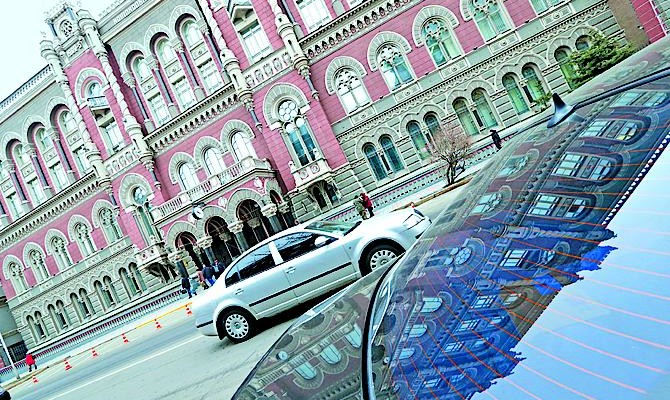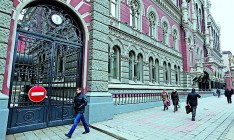Finance
RegulationThe government is reinforcing control of the banking sector

Last Friday, the Verkhovna Rada adopted the Law On Minimizing the Negative Influence on the Stability of the National Banking System. The document introduces changes to eight different laws of Ukraine, including, among other things, expansion of the powers of the National Bank of Ukraine and the Deposit Guarantee Fund of Ukraine (DGFU). The government intends to introduce tougher control over banks and have greater freedom to apply sanctions.
A tough course
The authorities of the banking regulator and deposit guarantee fund will be substantially expanded. Under the document, the DGFU will have the right to conduct an audit of a bank prior to recognition of its insolvency by simply calling it a problem bank. The reason for this may be failing to meet the liabilities to the depositors or creditors after more than five days. The NBU may pronounce a financial institution as a problem bank even if the share of its bad loans exceeds 40% of total assets. In the group of major banks, the majority account for 20-30% of bad loans. For instance, as of April 1, 2014, the volume of negatively classified assets of UkrSotsbank in relation to the total volume of its credit transactions amounted to 35.7%.
According to the new document, a bank may also fall into the category of a problem bank if the adequacy of its regulatory capital fell by 5% or more over the period of one month. Earlier, a decrease by 10% and more was deemed critical. Then the NBU set the standard for capital adequacy at the level of 10%. At that, as of June 1, the average indicator in the banking system was only 15.2%.
“With these criteria any Ukrainian financial institution may be recognized as problematic. Adoption of the law gives the NBU officials the power to apply unlimited pressure on the management of the banks,” says senior partner at Kravets & Partners law firm Rostyslav Kravets.
Now, the DGFU can take away a bank from the owners, if the bank seriously and systematically violates the law in the sphere of cash turnover, money laundering and financing of terrorism.
The requirements to bank capital increased fourfold. The minimum authorized capital for new financial structures has been increased from UAH 120 mn to UAH 500 mn. Banks that are currently operating were given 10 years to meet the new requirement. Almost 75% of the banking market requires an increase in capital. The Ukrainian Credit-Banking Union claims the new requirement was not sufficiently considered. “The changes will lead to forced closure of small and medium banks,” said representatives of the banking association.
On the other hand, tougher rules will help reduce the number of potential bankruptcies among the financial institutions. “The government wants to have more freedom in making decisions. In a democratic society, this may be a normal procedure, while in a non-democratic society government corporate raiding may appear,” notes a partner of the Integrites law firm Vsevolod Volkov.
Safety ring
The document also presents a mechanism for creation of a so-called transition bank. The decision to create such a financial institution is approved by the DGFU, which also transfers to it all or part of the assets of an insolvent bank. Creation of such a bank and the issuing of its shares and licenses are done through a simplified procedure. Also, the procedure of acquisition of a problem bank by an investor has been simplified.
At the same time, the law does not envisage conversion of deposits into the shares of the bank or bonds without the consent of clients. The International Monetary Fund did not agree to that, which is specified in the comparative table attached to the draft law. The creation of such financial institutions is one of the ways to salvage insolvent banks. Since the beginning of the year, the NBU deemed 11 financial institutions insolvent and so far none of them have been salvaged. The law in its current edition works only for the liquidation of the banks, while there are practically no mechanisms for their recovery, Deputy Executive Director of the DGFU Andriy Olenchyk stated earlier.
Another method of salvaging banks proposed by the law is at the government’s expense. The Cabinet of Ministers or a bank, in which the government owns over 75% of its shares, can rescue an insolvent financial institution. In the first case, the bank will be salvaged at the expense of the budget. In the second case, such a process will be at the expense of a state-owned bank. After the decision on salvaging a bank at the government’s expense is approved, the DGFU performs additional emission of shares of the insolvent bank. The Ministry of Finance or a state-owned bank can either acquire these shares or exchange them for treasury notes.
Three is not a crowd
The document has elicited different reactions among members of parliament and bankers. Although a disputable clause, which envisaged that bank owners were liable with all their property to cover the liabilities of the financial institution, was excluded from the law, it was adopted only on the third attempt.
Before the first vote, First Deputy Chair of the VR Committee on Finance and Banking Activity Oleksiy Kaida pointed to the importance of the law for obtaining loans from international creditors. After the first failed vote, Deputy Finance Minister of Ukraine Vitaliy Lysovenko addressed the MPs, reminding them about the billions of dollars in loans already received from the World Bank and the IMF and another tranche on the way. However, this did not help the parliamentarians to reach an agreement.






 of the agreement of syndication with Financial Times Limited are strictly prohibited. Use of materials which refers to France-Presse, Reuters, Interfax-Ukraine, Ukrainian News, UNIAN agencies is strictly prohibited. Materials marked
of the agreement of syndication with Financial Times Limited are strictly prohibited. Use of materials which refers to France-Presse, Reuters, Interfax-Ukraine, Ukrainian News, UNIAN agencies is strictly prohibited. Materials marked  are published as advertisements.
are published as advertisements.